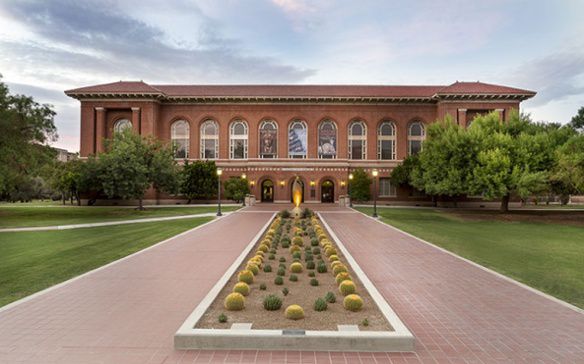Preserve Arizona History but Also Economic Security
Published
5/17/2017
By Julie Murphree, Arizona Farm Bureau Outreach Director: Did you know that before a new building project can be approved on private or state land in Arizona, a survey must be conducted to determine whether there’s some sort of artifact or other culturally-significant “object” on the land? And, once that survey is completed, a certified “

You may preserve history for Arizona State
But knowing and preserving our history gets complicated, and it should never put our economic security at risk. In this case of filing artifacts, only certain agencies are certified to do this filing. The Natural Resources Conservation Service (NRCS) within the USDA is one such agency, for example. Typically, the NRCS paid $1,000 a year in order to be a certified filer.
As a result, it’s not unusual for an Arizona landowner including our farmers and ranchers to go through NRCS with the survey results. With everything in order, NRCS files them with the museum. It’s the museum’s responsibility to store them in perpetuity. And certainly, there is a cost to this.
Farmers and Ranchers Might Get Hit with higher Fees for Simple Landowner Changes
Starting to excavate for new ditches on your farm? Pulling up old fencing to install
Ranging from $215 to $1,500 just for the filing, the newly-proposed rule would impose NRCS file the results, but the landowner pays for the museum to store any unearthed artifacts. And, if the landowner doesn’t pay, then NRCS loses their certification as a filing agency. So not only does it put farmers and ranchers and other landowners at risk for cost-prohibitive filing fees, it also puts NRCS at risk of losing their certification if the farmer simply throws up his hands and says no. (By the way, NRCS is legally prohibited from paying the filing fee themselves, because they can’t pay for the permitting process.)
Arizona Farm Bureau is opposed to the Arizona State Museum’s new fee structure. Said Arizona Farm Bureau President Kevin Rogers in a recent letter to Director Patrick Lyons, “Our farmers and ranchers live and work on the land, producing the food and fiber we need for survival. It is essential that they have the ability to use and develop their land in productive and efficient ways. The fee increase effectively prevents them from doing so by adding yet another barrier in the permitting process. For example, these fees will be cost-prohibitive for our ranchers who need to improve infrastructure and implement brush management practices to preserve the health of Arizona’s rangelands.”
In light of the proposed fee increase, Farm Bureau went on record with the Arizona State Museum requesting that agricultural interests be exempted from the filing fees. One way to ensure this exemption, Rogers suggested, would be to allow NRCS to pay a flat rate each year, similar to the certification fee they already pay, in order to allow them to file as necessary. This would prevent the fees from being passed on to the individual
“While we recognize that there is value in preserving Arizona’s cultural artifacts, that value should not overshadow the economic, environmental, and cultural contributions made by our hard-working farmers and ranchers,” added Rogers. “We appreciate your consideration of our concerns.”
Rancher Anita Waite of Cane Springs Ranch in Northern Arizona, near Kingman, calls the experience an “absolute nightmare.” Waite’s family has invested land improvements on their ranch for years including attempting to put in three new wells. Though they’ve only owned it for a few decades, this Arizona ranch has operated since the mid-1800s.
Waite asks, “How do you do a culture clearance on a well that’s been around since 1950? The Arizona State Museum has made it very difficult for new permitting requirements for our ranchers on state and private land, actually anyone that’s a landowner and wants to do improvements. Regarding the Antiquities Act, some of the new fee structures and cultural clearance requirements drive one to conclude that the museum is focused more on the letter of law instead of the intend of the law.”